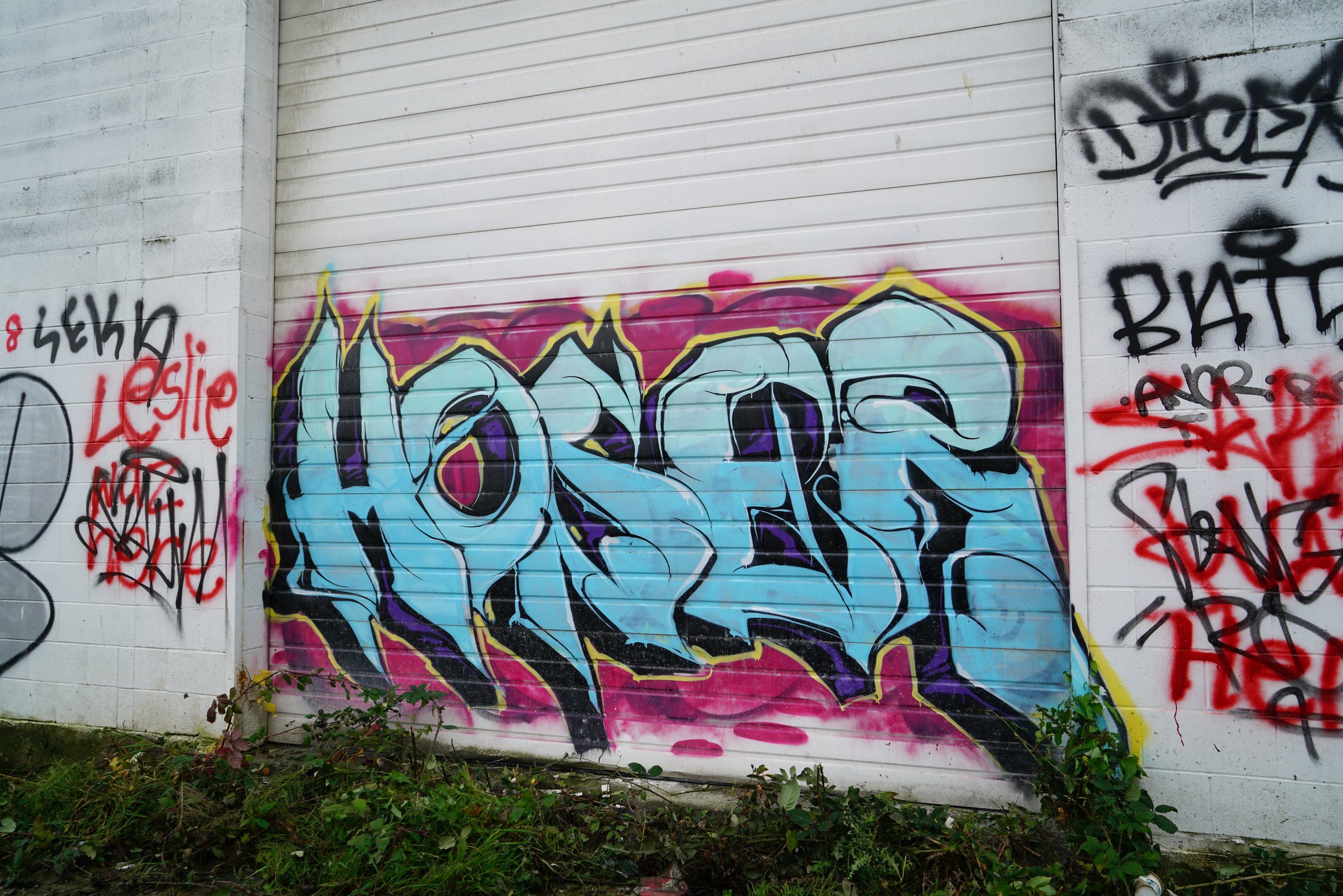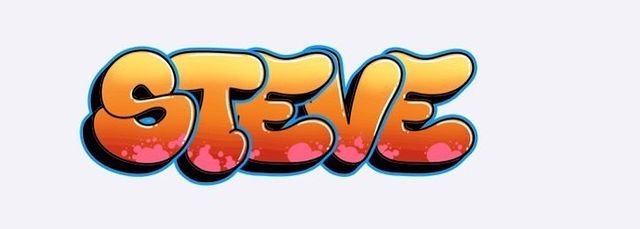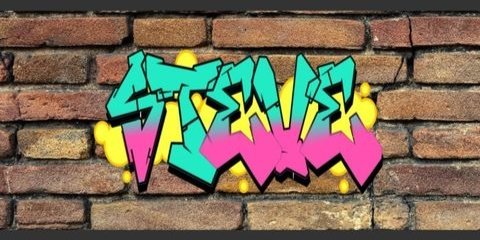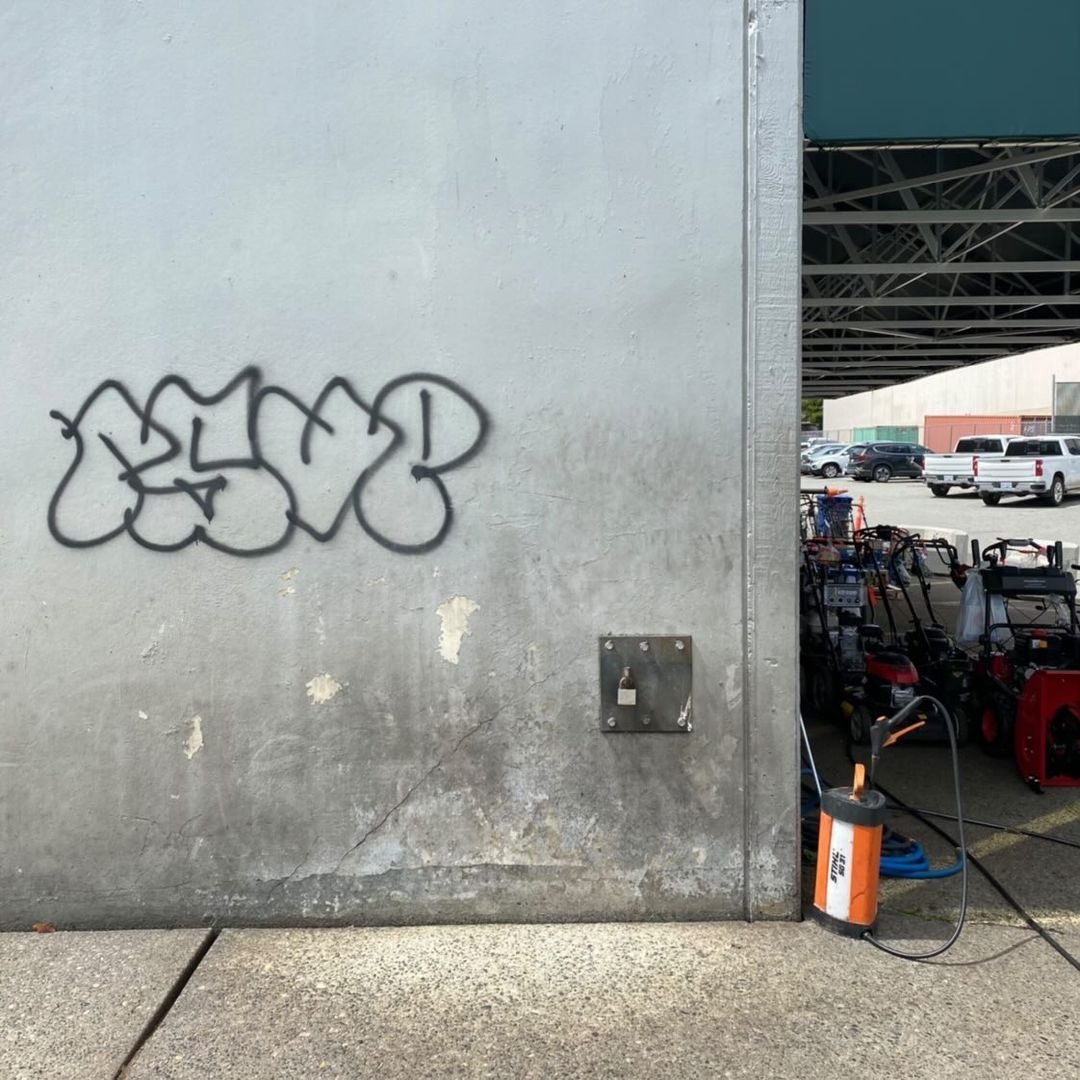Anna Waclawek, excerpt from Chapter 1: “From Graffiti to Post-Graffiti” in Graffiti and Street Art, 2011 (pp. 10-25).
Identify and describe the main differences between a tag, a throwie, and a piece.
In your response, discuss how and why each of these styles of graffiti writing emerged and be sure to include one example of each as an artifact in your PebblePad entry.
In 2019, I shot a lot of graffiti around the Metro Vancouver region. I came across by the artist HOSER, who has several graffiti art crews who create tags, throwies and masterpieces using the word. All of those photos can be found on Flickr. ARTIFACT 6 below also features an exploration of Metro Vancouver and the search for throwies and pieces featuring HOSER.
ARTIFACT 1 - Photo: Steven Lee, "Hoser (2/22)," Flickr, 4 Oct 2019.
This tag playfully interacts with an advertisement that appears in an alleyway that intersected with Davie Street in Downtown Vancouver.
ARTIFACT 2 - Photo: Steven Lee, "Hoser (19/22)." Flickr, 7 Oct 2019.
A simple HOSER tag on a telephone pole in East Vancouver. HOSER is the name of one artist, and it’s a name that is painted by several graffiti art crews across Vancouver as well as Toronto. Each crew signs the work they create as seen in the examples for a throwie and a piece, shown below.
The documentary film SYTLE WARS also described how tags form the backbone of other graffiti lettering styles which all use lines to form a signature.
TAG: Waclawek describes a tag as being “The earliest, simplest, most elemental form of graffiti writing… a quickly executed, monochromatic rendering of a writer’s graffiti name.” Tags were developed by graffiti writers in the 1960s as a means of quickly writing a nickname or pseudonym, which usually consisted of a name and a street number. The goal of writers was to get it out on the street in as many places as possible. As such, a tag wasn’t large or fancy in terms of its formal stylization, so it was usually printed as it needed to be easy to read.
Waclawek describes how it wouldn’t be until the mid-1970s that writers would move into using any particular word and begin to play with and stylize the lettering that they used (as seen by ARTIFACTS 1 and 2, featuring the word "Hoser"). This allowed individual artists to develop a variety of words that they could use throughout a city, which Waclawek notes had the added benefit of ensuring a level of anonymity, so the police would not be able to easily identify a writer.
ARTIFACT 3a - Photo: Steven Lee, "Hoser, (1/22)," Flickr, 27 Sept 2019.
A HOSER throw-up / throwie on the side of a farm vehicle, as signed by street art crew "ETC" that has sat on the north side of Highway 91, also known as the East-West Connector in Richmond, British Columbia, Canada. It's been in this spot for well over a decade - and is still easy to spot by vehicles today.
ARTIFACT 3b - Photo: Steven Lee. “HOSER REVISITED 2022.” Flickr, 22 May 2022.
THROWIE: Waclawek describes a throwie as being an evolution of the tag, as graffiti writers in the mid-1970s wanted to continue to get noticed for their work. Throwies, also known as throw-ups, were much larger works, using bubble letters that were outlined with one colour, and filled in with another.
For example, in ARTIFACTS 3a and 3b on the right, one can see the outline of the bubble letters being painted in the colour white, while each letter was filled in with the colour black. The white outline is thicker on the left side of the letters, to help give the overall work a feeling of popping up off the surface, as if it was a three dimensional object.
Waclawek also describes how the lettering is usually a bubble style of lettering, but can become more creative depending on the creativity of the writer. Wclawek notes how throwies are usually twenty times larger than a tag, and this is also illustrated by ARTIFACTS 3a and 3b, where the word HOSER takes up approximately 1/3rd of both the top and left hand side of the farm vehicle it’s written on. This throwie is definitely much larger than the ones in ARTIFACTS 1 and 2 above, where the one on the advertisement is fairly small, and the other was vertically scribbled onto the side of a telephone poll in Vancouver.
ARTIFACT 4 - Photo: Steven Lee, "Hoser, (10/22)," Flickr, 5 Oct 2019.
A HOSER masterpiece / piece by the street crew BAMC (whose initials can be seen above the letters H and O) in this HOSER piece. It’s the fourth of many in this area, sprayed onto the back of the Parker Street artist studios in Vancouver, British Columbia. Given the work by these artists is found across Metro Vancouver, they would qualify as being called what is known as an ALL CITY artist. More about Hoser can be discovered in the short video posted below as ARTIFACT 6.
PIECE: A piece (also known as a masterpiece) is a large, impressive works that Waclawek describes as being a natural evolution to the throwie that occurred in the late 1970s. Waclawek highlights how a piece is similar to a mural in terms of its scale and complexity of design, which requires a lot of pre-planning and technical expertise on the part of the writer. In terms of scale, for example, pieces would often take up the entire side of a subway car in New York City.
In ARTIFACT 4, one sees a piece featuring the word HOSER, by the street artist BAMC. Formally, there are many differences that distinguish it form the throwie and the tag. Most notable, the letters are approximately six feet in height, much larger than the throwie or the tag. This piece is also much more complex in design than the throwie and tag that are shown above.
The letters shown in ARTIFACT 4 are more complex than bubble letters found in ARTIFACTS 3a and 3b above. The letters in ARTIFACT 4 also have rough edges that feel like a whiffs or puffs of smoke floating in the air. The linework of the letters also feature shapes that flow in and out of other parts of either the same letter, or even other letters altogether. There’s a gradient that can be seen across the colour purple used to fill in all of the letters. Specifically, one can see a light purple near the top that fades into a darker purple along the bottom of the piece. There are also red marks that serve as highlights on different parts of the lower half of the overall word. Finally, two shades of blue serve to form the outline of the letters in the piece, which lay on top of a dark black with shades of green that feel as though the letters might be floating high in the cosmos of outer space, or down deep hidden away in the underground sewers.
ARTIFACT 5 - Video: Steven Lee. “Tags, Throwies, & Pieces, Oh my!” Flickr / YouTube, 24 May 2022.
A video response to this question, made by myself behind the Parker Street Art Studios in Vancouver, British Columbia, Canada.
ARTIFACT 6 - Video: McLovin Gweilo. “Hoser.” YouTube, 20 Jun 2020.
A short video exploring throwies and pieces of Hoser in Metro Vancouver, British Columbia, Canada.
Ivor Miller, “Guerrilla Artists of New York City” in Race & Class (1993) available as a PDF on Moodle to answer the following question:
2. Ivor Miller’s essay deals with a set of “Guerrilla” artists, the NYC street and graffiti artists of the 1970-80’s. Identify and list in a short paragraph FOUR factors that stood out to you that Miller raises to explain the rise of graffiti art in the 1970-80’s, leading to the phenomenon of graffiti artists working together? To support your observations, you can upload up to 4 artifacts on your ePortfolio (images, video, illustrations etc..) to help support your points.
In his essay, Guerrilla artists of New York City, Ivor Miller identifies several factors to explain the rise of graffiti art in the 1970's-80s and what lead to the phenomenon of graffiti artists working together. A few of these factors included: (1) bringing together youth in a competitively friendly and supportive atmosphere for both developing and established writers; (2) creating a means of communication for a youth culture that yearned to be seen; (3) providing a coping mechanism for writers attempting to escape the many social, class, and racial divides; and (4) allowing writers to reach out and form a kind of global influence that has helped to preserve graffiti as an ever evolving art form.
Artifact 7 - Photo: Henry Chalfant. "CYA by 2Mad." henrychalfant.com
(1) BRINGING YOUTH TOGETHER: Miller dives into how graffiti brought together hundreds of youth from across New York and other cities in ways that hadn’t been seen before (Miller 28). Miller explains how this was a positive development, as youth were able to avoid joining street gangs (28), and youth were able to offer protection for each other as they worked (29).
More importantly, on a formal level (and as seen in documentaries such as STYLE WARS, and MARTHA: A PICTURE STORY), youth who came together were able to serve as a source of inspiration for one another. Miller explains how: “…groups of writers met at certain train stations to watch the latest style innovations and to form painting crews" (28). In terms of what inspired innovation, Miller describes how: "…an African American cultural heritage provide(d) a base from which many writers construct(ed) and improvise(d) their pieces" (33), where "aerosol culture was a spontaneous response to a need for multicultural unity" (28). Specifically, Miller defines the concept of creolisation, which: "…tend(ed) to synthesize existing fragments together into a seamless whole" (30) where writers used their diversity to help inform their work, as:
...they were especially conscious of and open to cultural motifs from the world around them: their families taught them movement and language from their particular heritage; TV taught them advertising techniques; currents running within their communities taught them something about politics and the history of oppression (27).
ARTIFACT 8 - Video: MOMA. “This Mondrian painting is actually a jazz score.” YouTube, 19 Aug 2019.
Some writers, such as AMRL/BAMA, described this coming together as a meeting of the minds (29). Spar noted how "The media makes a form like this seem totally new, yet it is connected to our history. You listen to Cab Calloway, if that's not Hip Hop, then... what is?" (33). Calloway was a musician who was at the top of his form in the 1930s and 40s whose influence spanned his entire life, well into the 1970s and 80s. Calloway has a great energy to his music that would have undoubtedly influenced graffiti writers of the 1970s. The energy of his music was infectious and even on a subconscious level, could have impacted how graffiti artists designed their works, infusing them with a similar energy and movement not that dissimilar to how many art historians feel that the energy of New York influenced Piet Mondrian’s 1943 painting, BROADWAY BOOGIE WOOGIE, as seen in ARTIFACT 8, a short video by the Museum of Modern Art (MOMA).
ARTIFACT 9 - Video: montanacolorstv. “Vulcan @ VIMBY feat. Montana Colors.” YouTube, 10 Aug 2009.
(2) COMMUNICATION: Miller also explains how graffiti provided a means for youth to talk to one another (32). Youth were aware of each other through the tagging of trains (28). The tags, throwies and pieces painted on both the inside and outside of trains, provided an opportunity for youth to be seen by each other, and by the larger public. Speaking with Miller, graffiti writer Vulcan, argued that:
...the whole meaning behind the art is that it's a communication language... My main thing is taking letters and distorting them, changing them, mutating them. It's about evolving the alphabet... you can make it your own (32).
In ARTIFACT 8, Vulcan describes the collaboration process that is possible between writers when creating graffiti pieces.
(3) A MEANS OF COPING: Miller also explores how painters used graffiti as a coping mechanism that helped them to process “…the reality of their lives through their art” (10). Writers struggled with poverty, income inequality, a broken school system that failed to challenge youth or respond to their needs, as well as the very serious threat to well being created by gangs (30). Discussing why he turned to graffiti, writer Phase2 described how he:
...was totally bored with what I was being taught in school. To me it was tired. Even in elementary school it was tired. Ages ago I abandoned what they taught us in textbooks. I always found a need to do something different. I used to be able to print so perfectly that the script was just retarded. Even writing with th eleft hand looked better than printing the way that they taught us (33).
Miller also notes how painters used aerosol art to rebell against authority and marketplace consumerism. Specifically, Miller stated how graffiti art sprung "from an attitude of constant rebellion against the assimilation demanded by mas marketed culture" (31). Graffiti writer Spar expanded on this idea, saying:
We were kids faced with a world that said 'It's got to be done our way. You've got to live with it.' So we as kids just wanted to change that (32).
Finally, the work of writers served to confront and create tension in the lives of those who lived in more comfortable areas of New York. Miller describes how work was carried across a transit system that could easily cross through both affluent and impoverished areas of the city.
ARTIFACT 8 - Video: Metro Focus. “The Subway Slide.” YouTube, 09 May 2019.
ARTIFACT 9 - Video: Graffiti NYC. “Today’s NYC Graffiti Subway Train.” YouTube, 11 May 2020.
From: CBS News NY. “Demanding Answers: How Did Vandals Cover An Entire Subway Car In Graffiti?” YouTube, 22 Jan 2020.
ARTIFACT 10 - Video: CBS News NY. “Exclusive: Graffiti Vandals Strike Again, Hit ‘E’ Train In Lower Manhattan.” YouTube, 29 Jan 2020.
ARTIFACT 11 - Video: CBS News NY. “At Least Two Dozen Subway Cars Hit With Graffiti.” YouTube, 3 Dec 2020.
ARTIFACT 12 - Video: Fox News 5 NY. “NYC subway graffiti makes a comeback.” YouTube, 14 Mar 2022.
Also, as shown in ARTIFACTS 8-12, in May 2019, January and December 2020, as well as in March 2022, NYC news outlets reported how graffiti artists took NYC by surprise when they were able to access and paint various subway train cars, covering them in graffiti, in a throwback to the way things were in the 1970s and 80s (as seen in the videos posted in this section).
(4) GOING GLOBAL: Miller also notes how what began in Philadelphia and New York City quickly spread across the world, as: "…young artists from Europe, Australia and New Zealand now take inspiration from New York masterpieces" (14). As illustrated in class, through the film MARTHA: A PICTURE STORY, a major factor in the spread of graffiti was through photographers such as Martha Cooper and Henry Chalfant, both of whom documented the New York street culture and the graffiti scene in their book, Subway Art, which would become a sought after source of inspiration for street artists around the globe.
ARTIFACT 13 - Video: MasterClass. “Futura Teaches Spray-Painting & Abstract Art.” YouTube, 12 Aug 2021.
Today, this kind of record continues to be created and spread digitally through social media platforms and websites. This not only includes a plethora of Instagram accounts run by independent graffiti writers and street artists, but instructional opportunities as well. Many videos about creating graffiti can be found on YouTube, as well as on online learning platforms such as Udemy, Skillshare and on MasterClass, whose course about graffiti and street art is led by street artist Futura. A commercial for Futura’s MasterClass can be seen in ARTIFACT 13, and another video, seen in ARTIFACT 14 features a father and daughter playing with making several artworks based on what they learned in Futura’s MasterClass.
ARTIFACT 14 - Video: Kevin Land. “MasterClass Lessons Learned with Futura Abstract Art.” YouTube, 29 Aug 2021.
Lori Zimmer, “The Roots of Graffiti” in The Art of Spray Paint: Inspirations and Techniques From Masters of Aerosol, 2017 (pp. 10-31).
3. On pp. 35-40 of the Ivor Miller article, several of the graffiti writers describe their reasons and motives for taking up graffiti in their own words. Looking to the Lori Zimmer profile of Crash, Pichiavo, and BR 163, describe some of the similarities and/or potential differences that you can pick out between these graffiti writers’ experience and philosophy compared to those profiled in the Miller article. Be sure to include at least two artifacts to support your points.
Zimmer discusses how street artist Crash was “…highly influenced by early anime such as Speed Racer and GIGANTOR, along with Marvel Comics…” (Zimmer 17) which is similar to what Vulcan describes in Miller’s article, when he said how:
Everything that we did with the spray can was done by trial and error. There were no teachers. There were no books, no schools. I grew up reading comic books. I was never taught to draw. The only thing I wanted to draw was pieces, letters, and draw them wilder and wilder. We evolved from spray painting one simple letter into these complicated styles.
ARTIFACT 15 - Video: Profets. “Painting 3 Murals in 3 Days! BLACK CLOVER + MHA.” YouTube, 03 Mar 2020.
The style of Crash is similar to the Australian graffiti artist Profets, who is another artist influenced by pop culture and specifically anime. Profets has many great videos about his process on his YouTube channel, such as the one seen in ARTIFACT 15.
Another influence that Crash raised was in regards to being influenced by "...the works of evolutionary Pop Artist James Rosenquist..." Zimmer also notes how "Crash integrated these early influences with spray paint, using a freehand style that teeters on the edge of Pop and graffiti" (Zimmer 17). This idea of integrating styles is also discussed by street artist Phase2 in Miller's article, where:
Phase 2 describes how the images that influenced writers were transformed on the trains: They try to make you think that everybody’s influenced so much by these Pop artists, Futurists, Surrealists and Vaun Bode,* but the creative guys are going to leed off of Bod~, they’re not going to copy his art to the letter. It’s good to be able to copy something, but it’s even better when you can take something and make it your own.
ARTIFACT 16 - Video: akerockstar. “Style Wars The Outtakes (train footage only edit).” YouTube, 16 Sep 2017.
Miller also touches upon how artists learned from each other. Specifically, Miller states how a:
Writers’ redefinition of the alphabet was simultaneous with their creation of a written language that is the basis of their own culture. Vulcan says: When the trains were running with paintings, kids would stand out there all day, and they could read everything that went by, even the complicated Wild Style.
The film STYLE WARS features many images of subway trains in the 1970s, as seen in ARTIFACT 16, a video found to the right.
Zimmer also notes how graffiti writer BR163 "is part of the new school of graffiti, inspired by graffiti history in his neighbourhood of the Bronx" (28). She also notes how BR163 was introduced to graffiti by older graffiti artists who were a part of a group called the TATS CRU. BR163 is a formally trained artist, which is similar to the cases of Hambleton (who attended Emily Carr University) and Basquiat (who attended an art focused high school).
ARTIFACT 17 - Photo: Steven Lee. "Parker Street Studio Graffiti Crown." 22 May 2022.
CREATIVE ACTIVITY: Create Your Own Graffiti Tag
Please login to the Graffiti Empire Generator and design ONE word/name tag that incorporates THREE very different FORM choices—be it colour, composition, scale, dimension, complexity, potential materials etc.. Be sure to screen grab the three examples for inclusion in your PebblePad entry, and for each example, offer a brief explanation as to how a different potential meaning is created with each graffiti design.
This simple tag was designed so that it could be quickly drawn with a fat tipped sharpie marker. It would not be a large work, it would be no larger than two or three lines tall on a lined piece of paper. It was designed with the Graffiti Empire Generator.
This was designed to be a throwie, using large bubble letters. It was designed with an iPhone app called "Graffiti Creator." The app had set colour designs, that couldn't be altered to appear more plain, as one would find in the fill for the letters in a throwie.
This was designed to represent a masterpiece, with more colour, fancier letters, and a more interesting and complex background. It would be painted onto a large surface area. It was designed with the same Graffiti Empire Generator used to create the above tag.
BONUS CREATIVE ACTIVITY: Go out into your neighbourhood or anywhere around the Lower Mainland and document three different examples of graffiti, identifying them as a tag, throwie, or a piece.
These photographs should be selfies or identify you in some way in the photos. In the caption for each photo, simply include the approximate location/address of where you spotted the graffiti.
South Surrey / White Rock really doesn't have any kind of graffiti. But I did manage to stumble upon a political tag, some generic selfies, as well as a some very simple throwies.
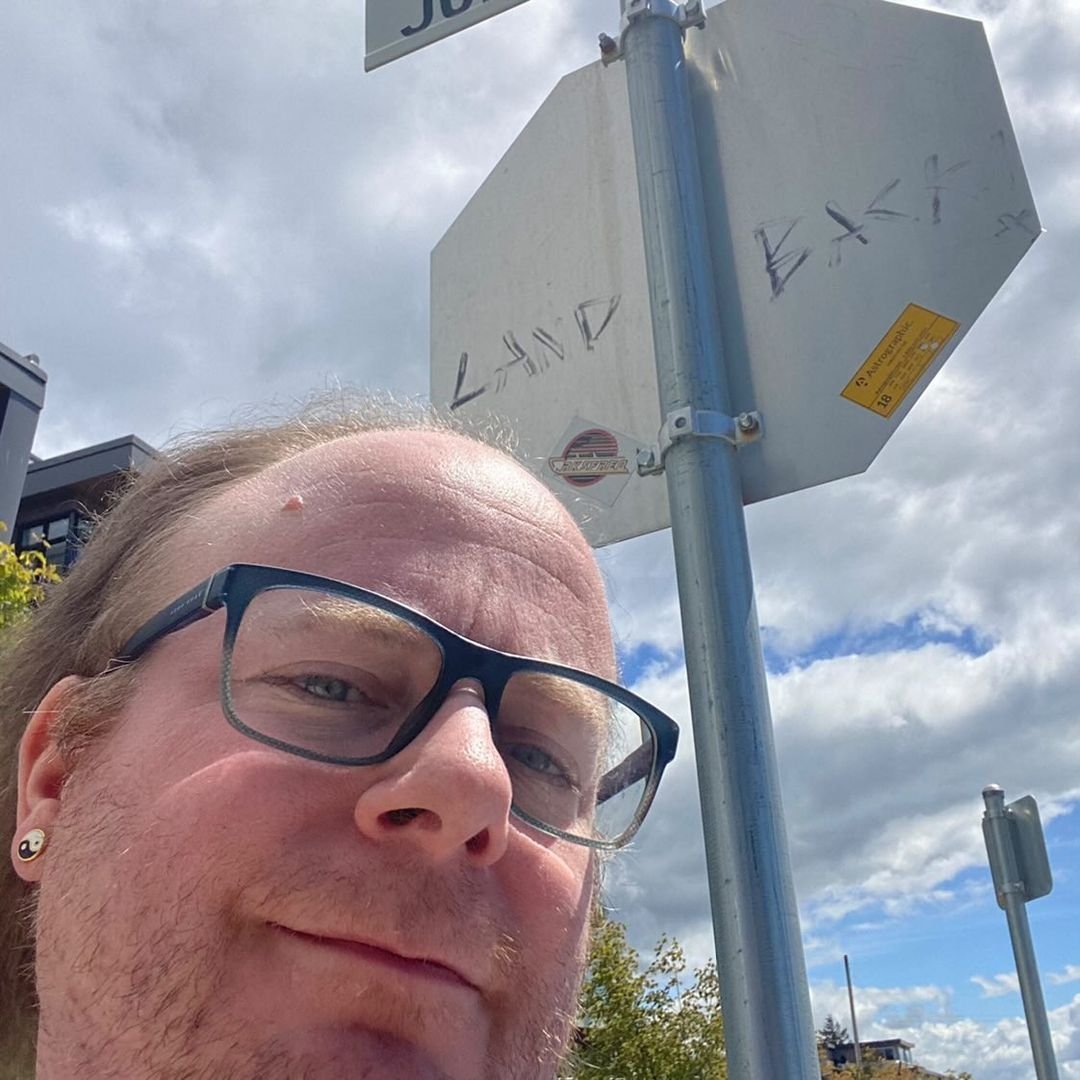
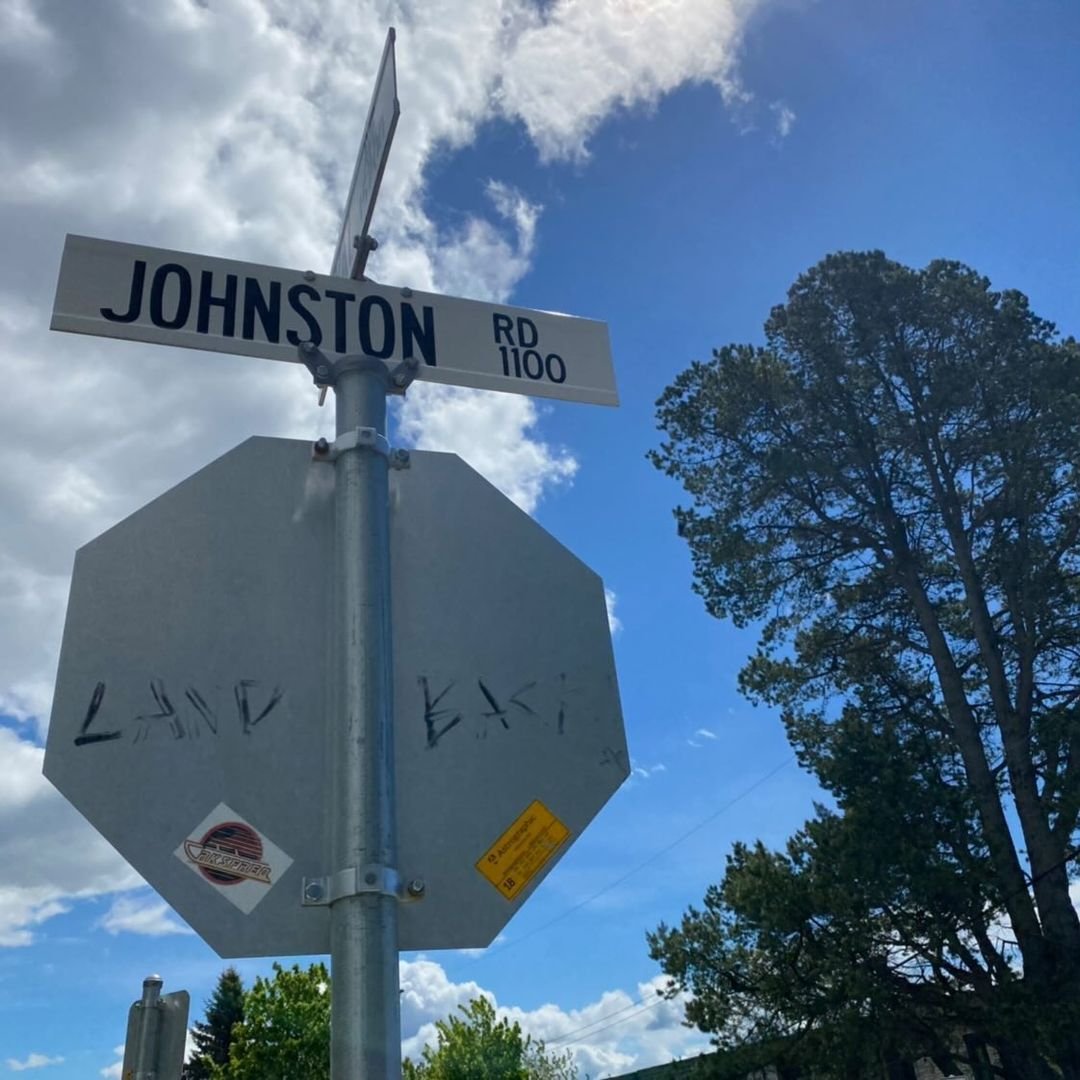
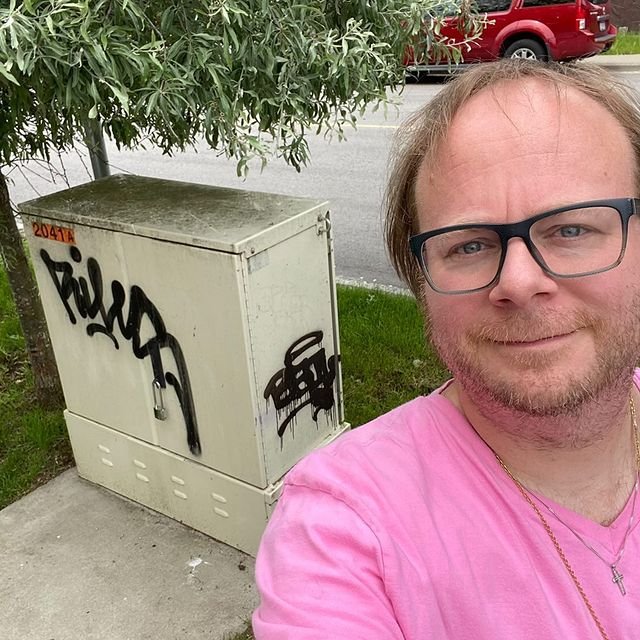
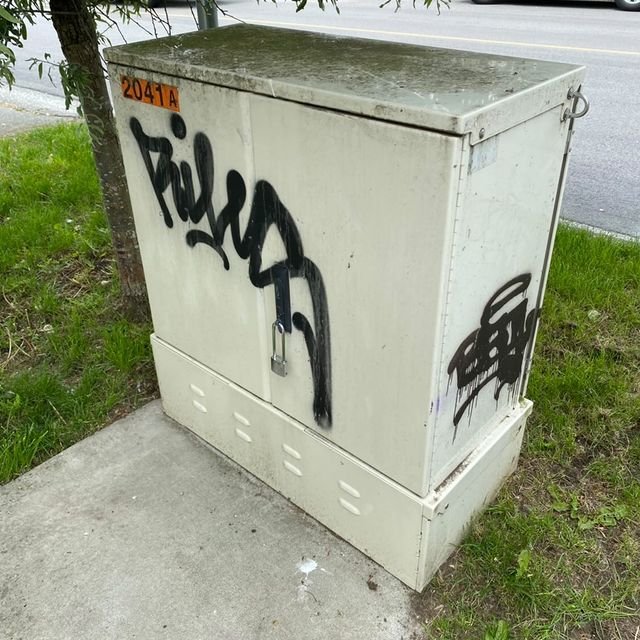
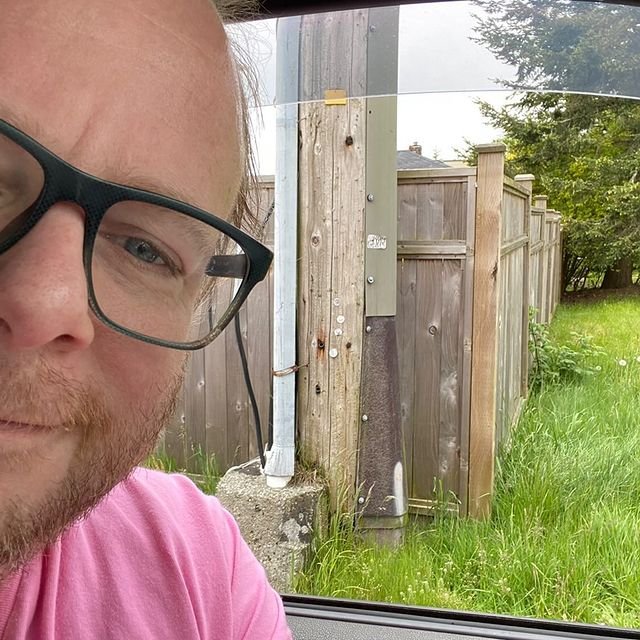
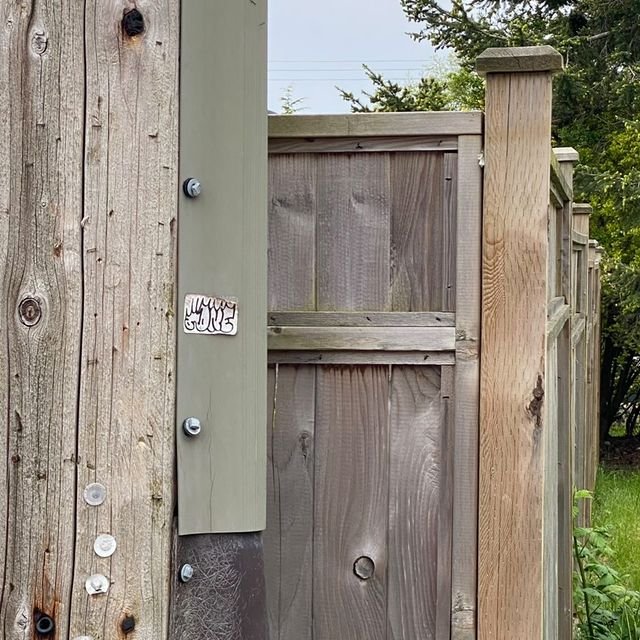
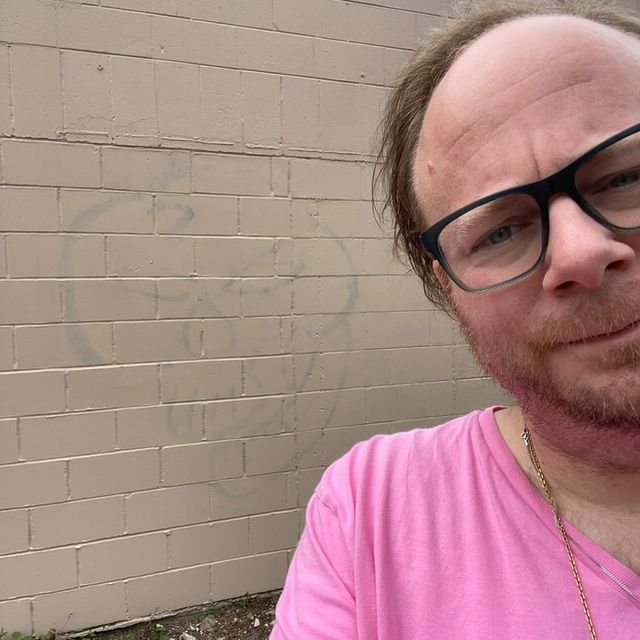



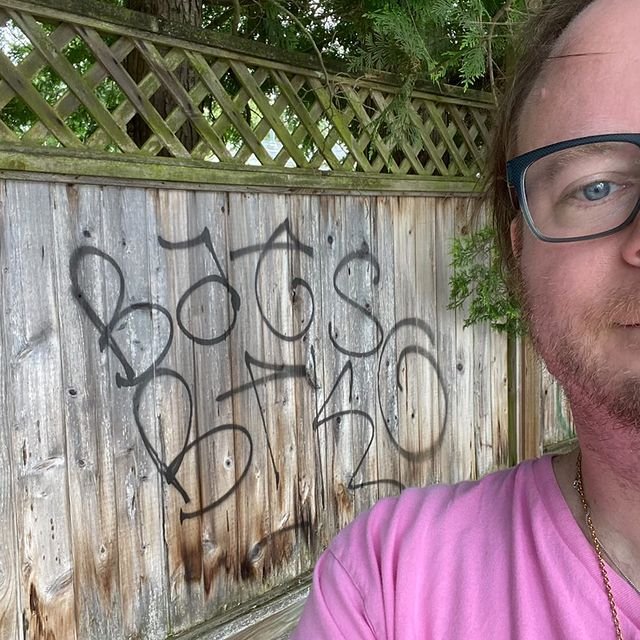

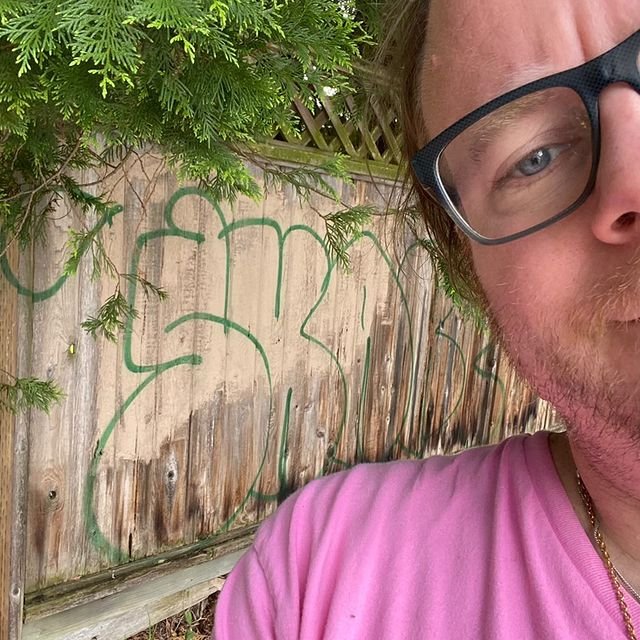
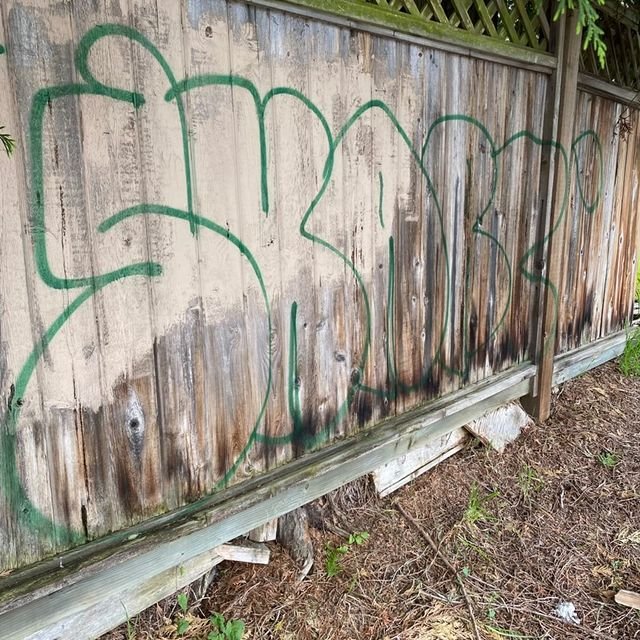
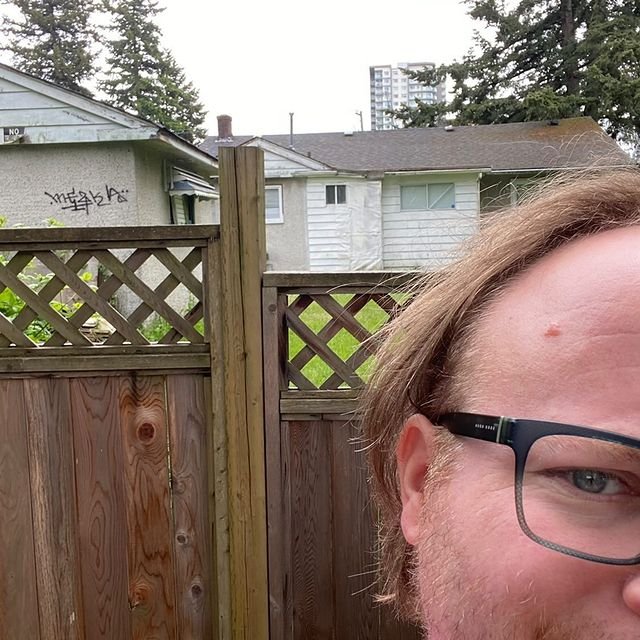
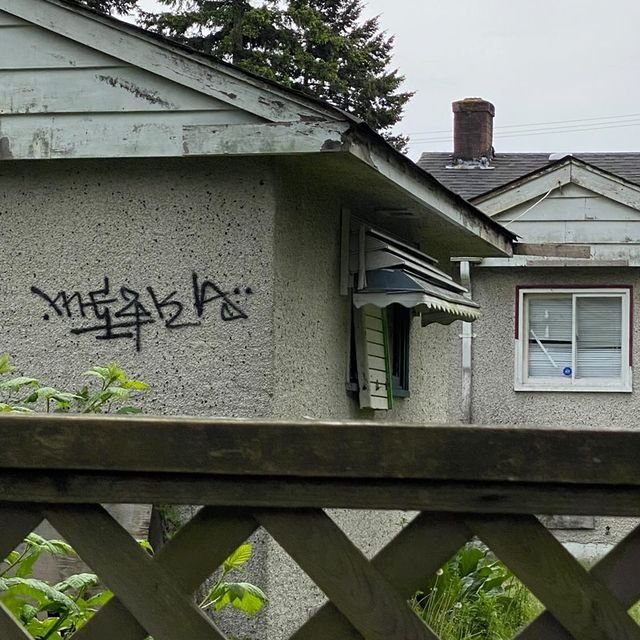
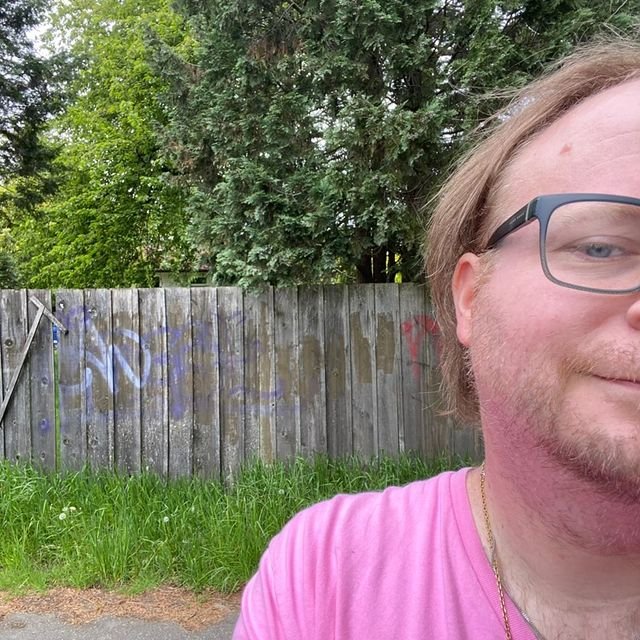
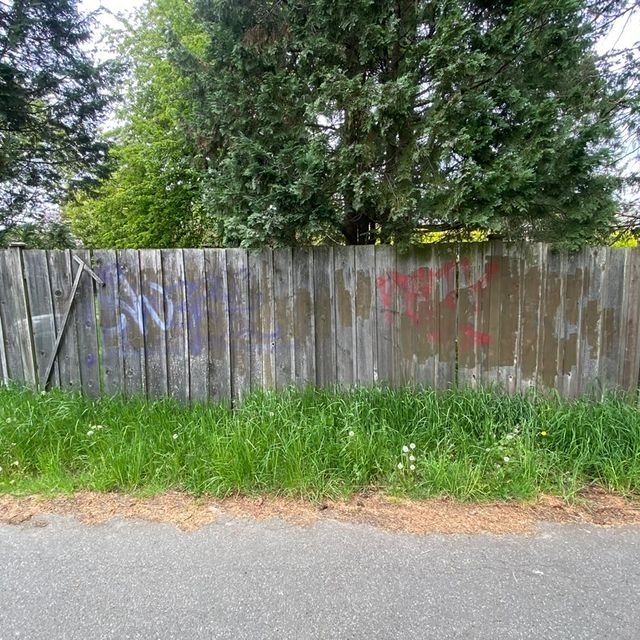
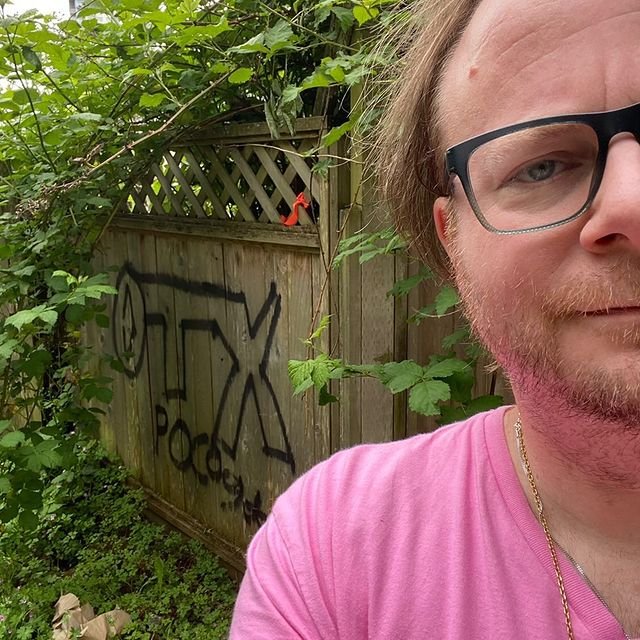
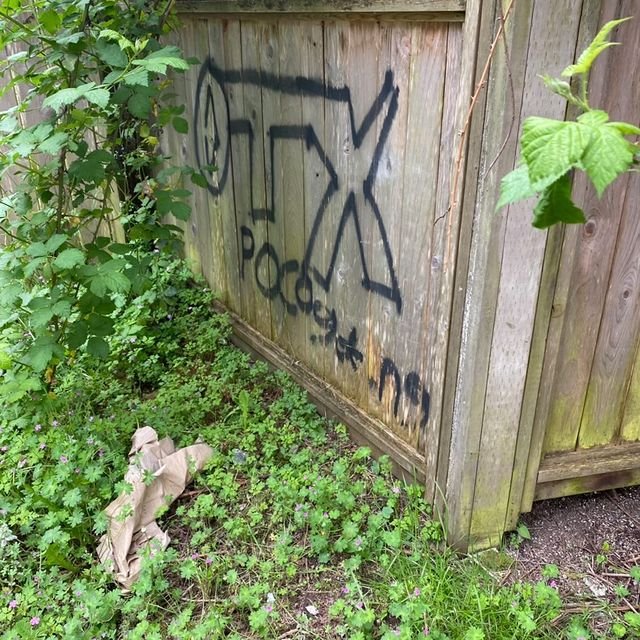
Video: Steven Lee. “Graffiti Free South Surrey Athletic Park?” YouTube, 24 May 2022.
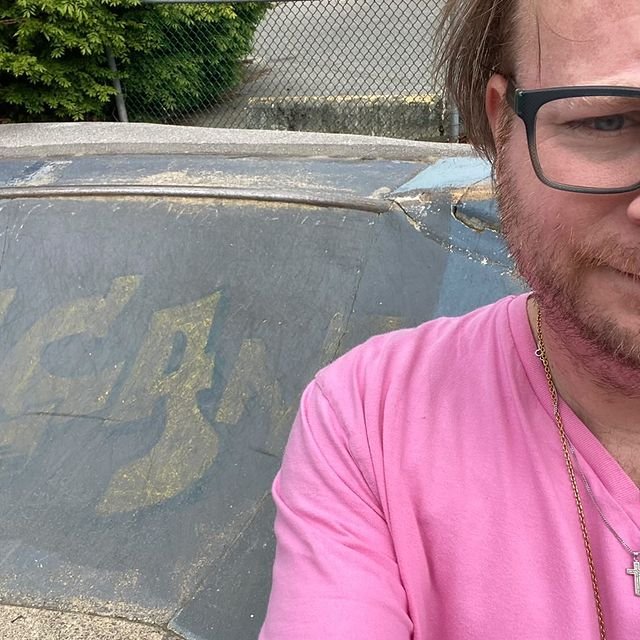
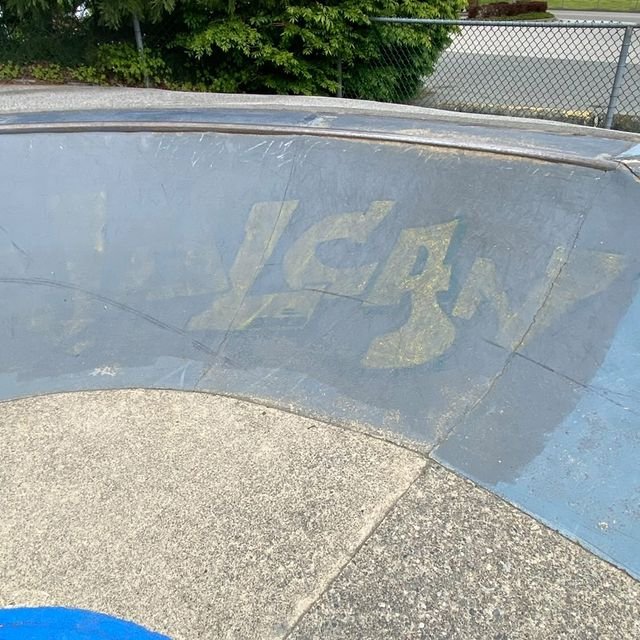

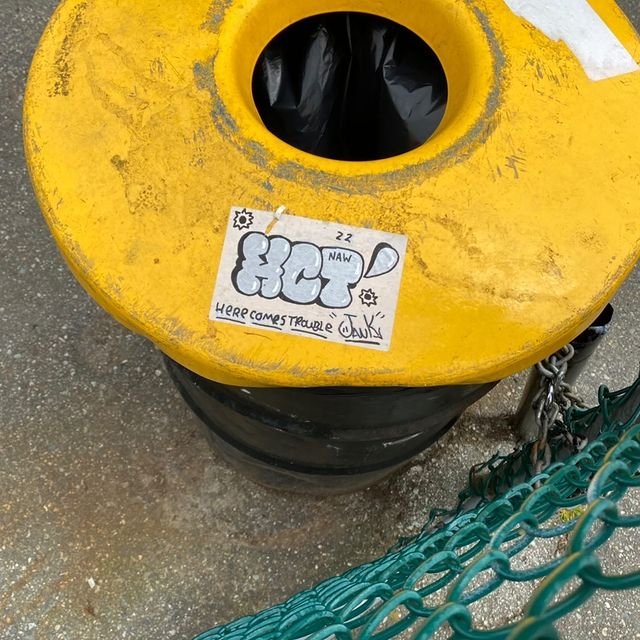
Photo: Steven Lee. “72nd Avenue & Comber Way Selfie - Tag.” iPhone 11 Pro, 19 May 2022.
Photo: Steven Lee. “72nd Avenue & Comber Way - Tag.” iPhone 11 Pro, 19 May 2022.
In class, Dr. Barenscott offered a variation on this exercise, challenging us to capture the kind of imagery that photographer Martha Cooper might have captured, which is what I have tried to do in the four photos presented here...

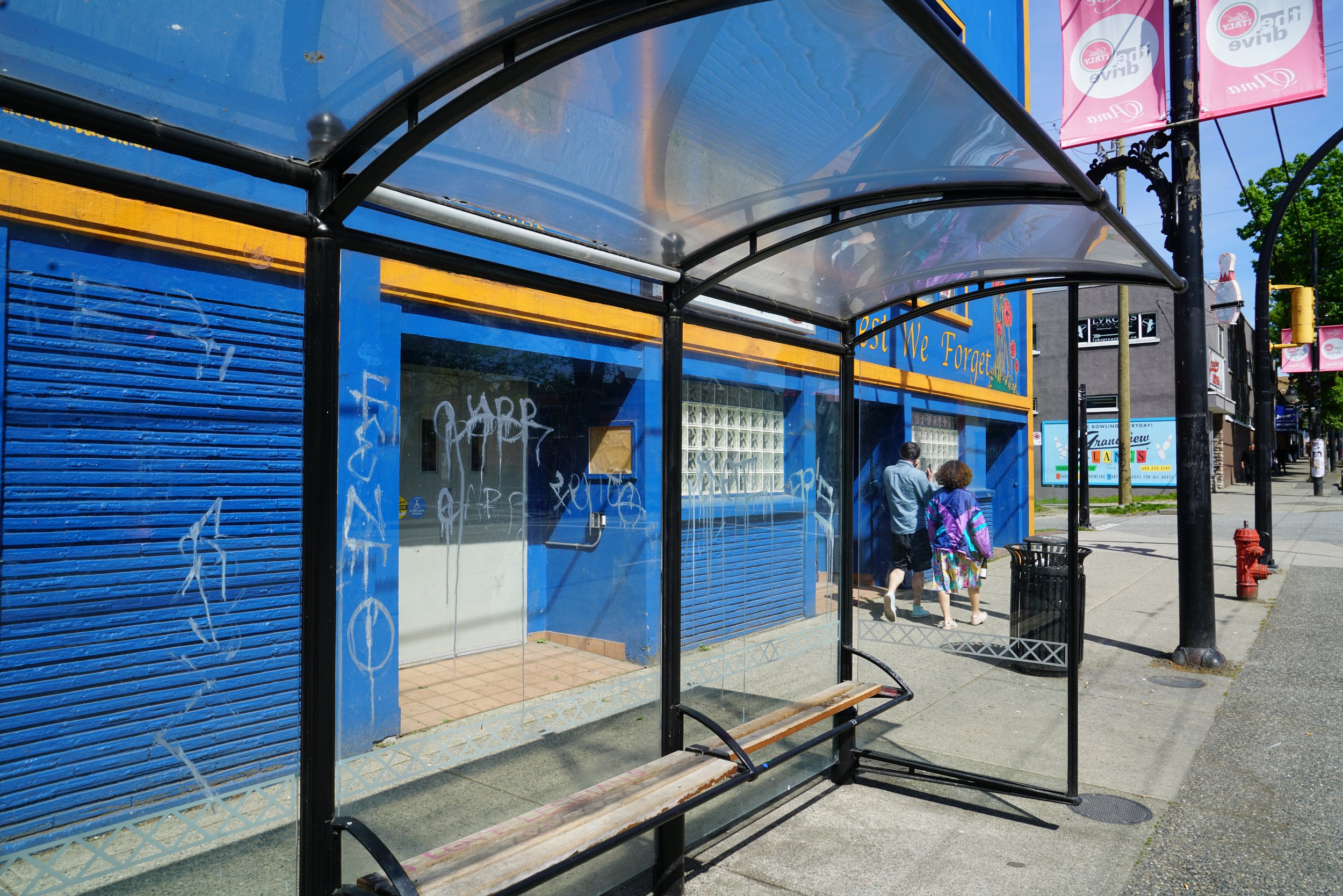
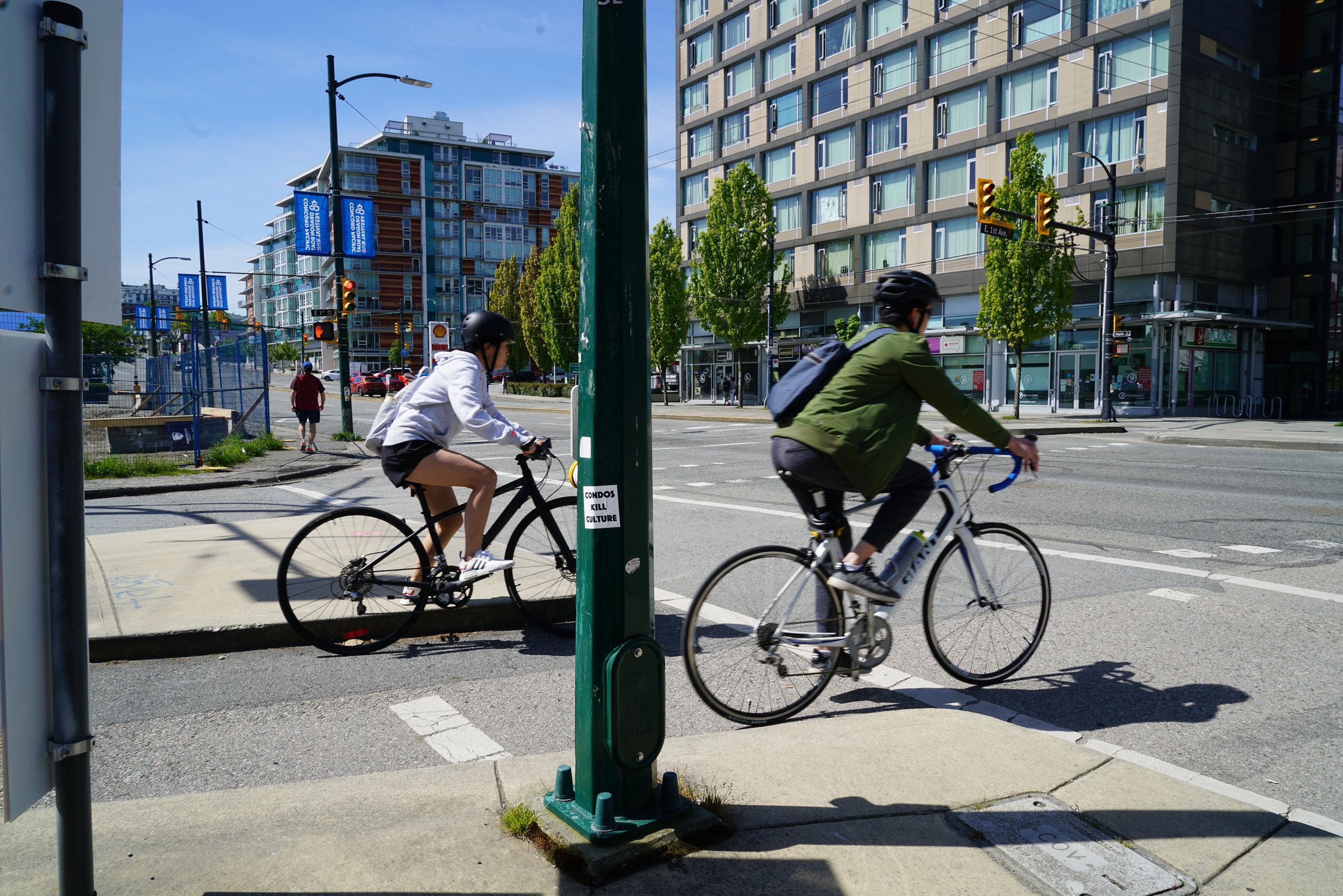
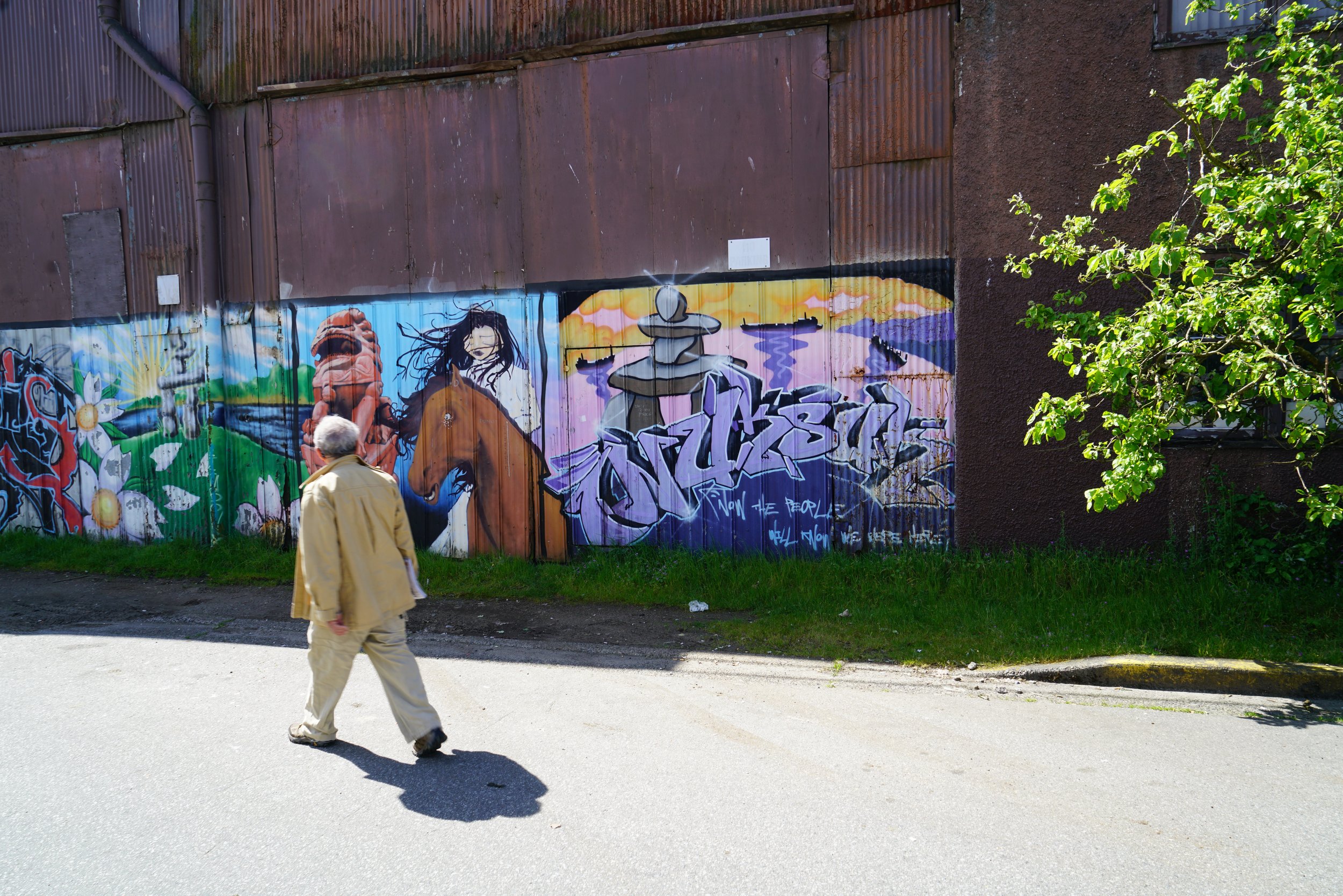
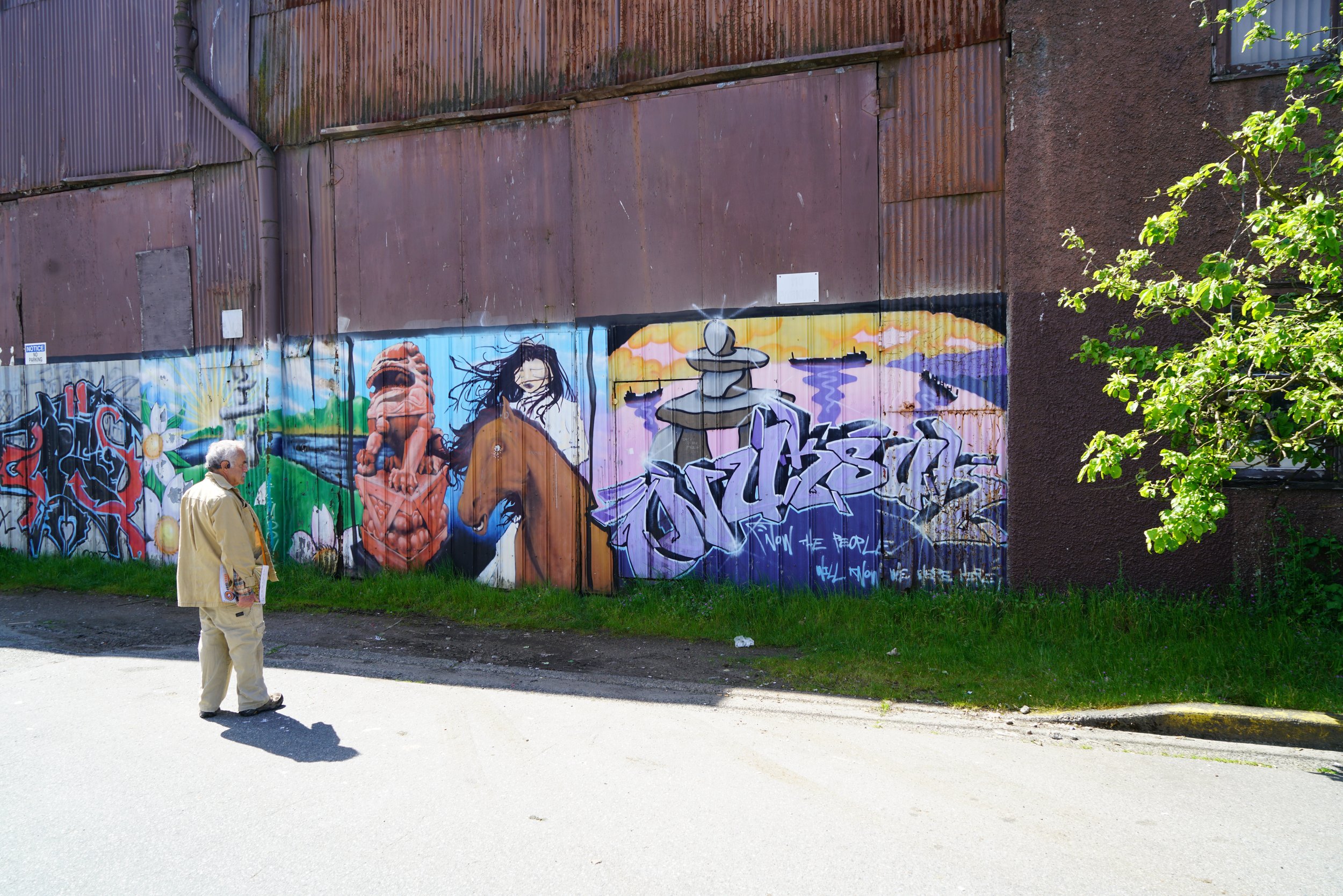
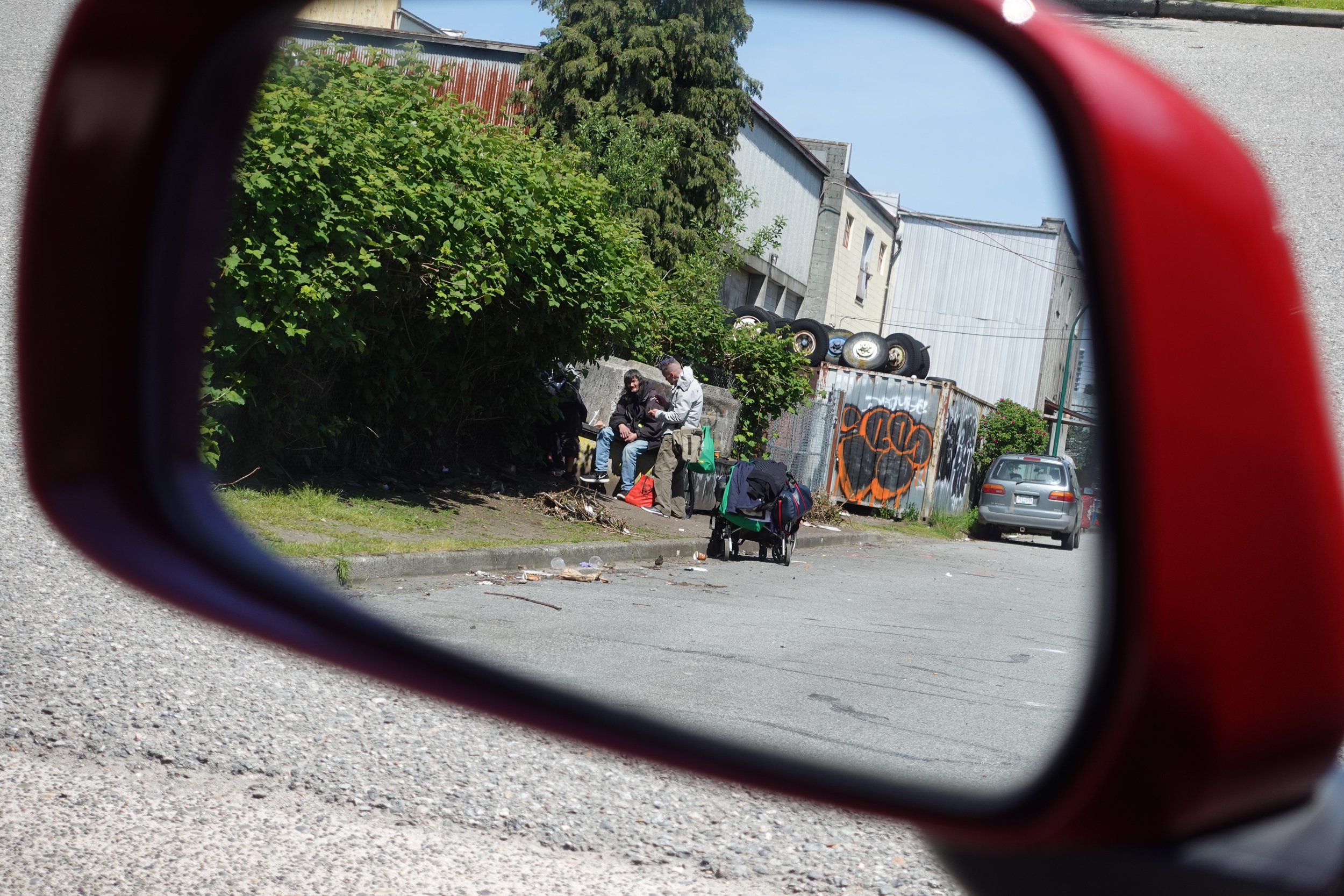
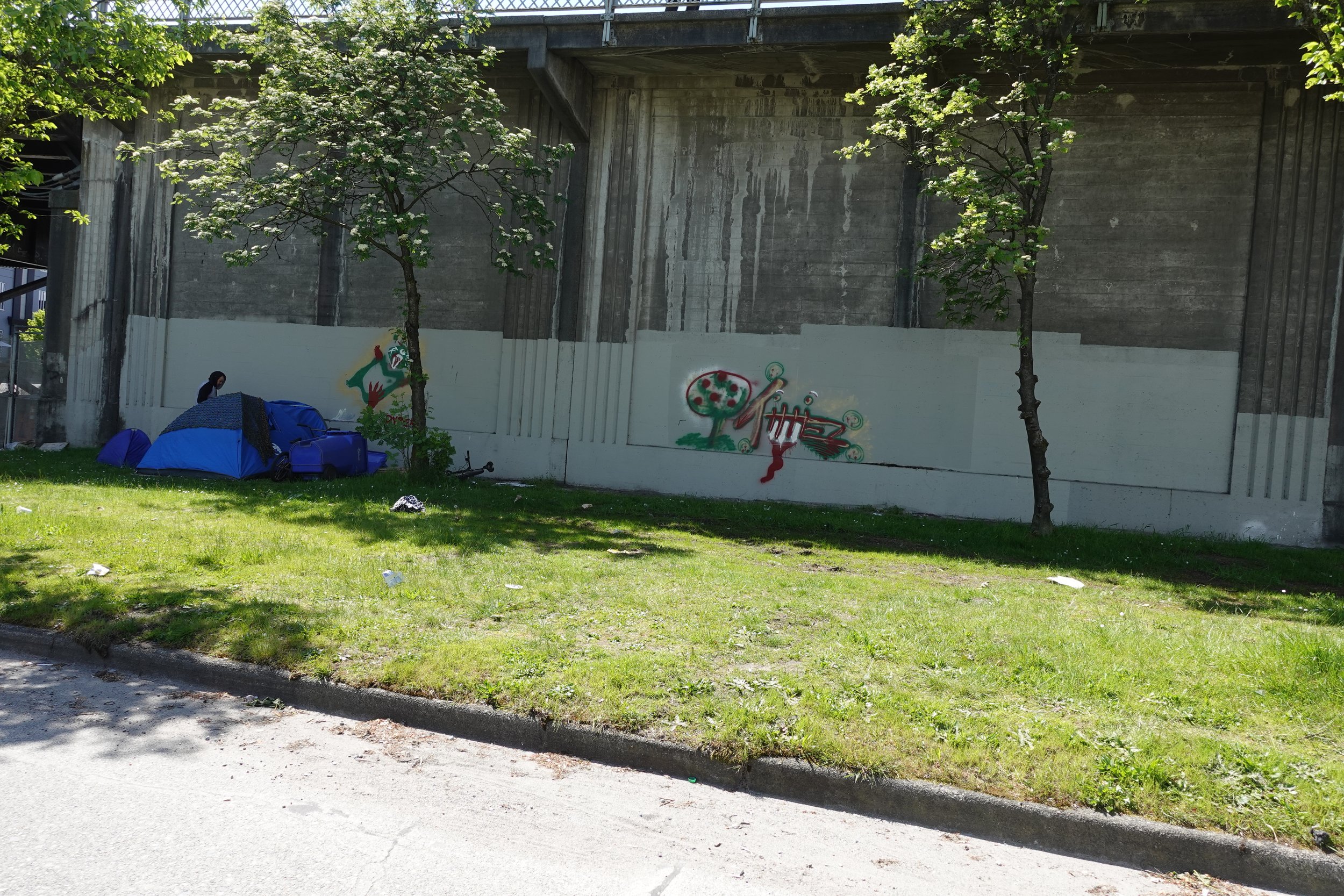
Header Banner Photo: Steven Lee. “HOSER (15/22).” Flickr, 7 Oct 2019.
